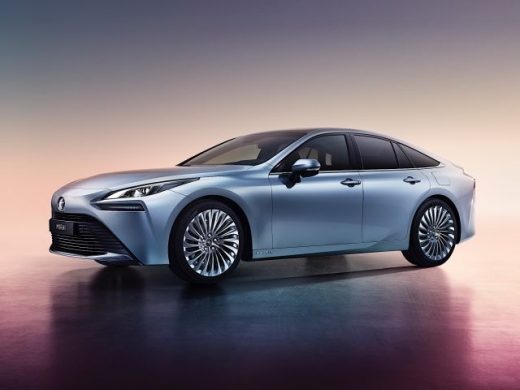Toyota’s second-generation Mirai has a 400-mile range
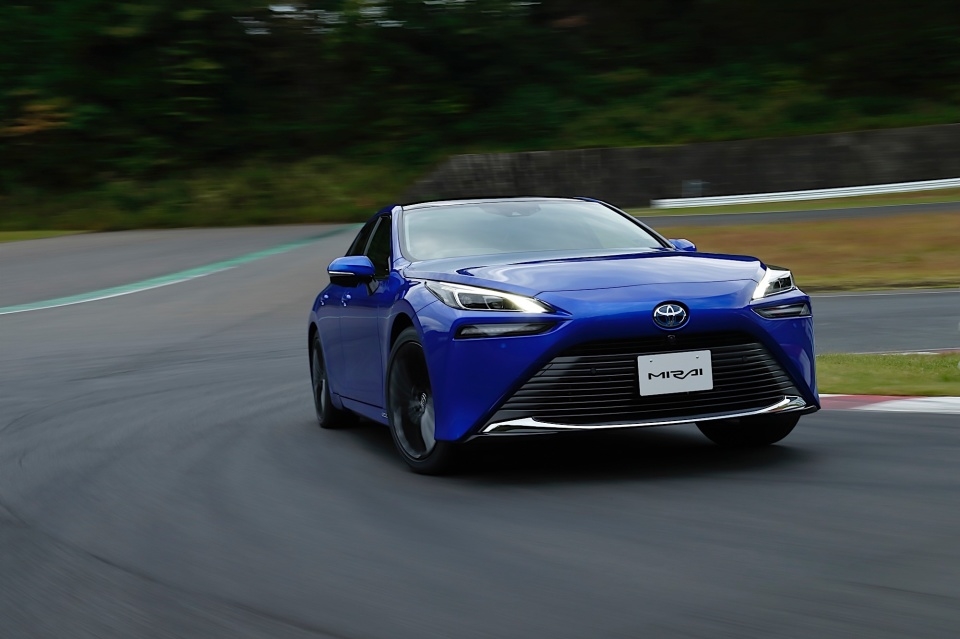
Toyota is one of a few companies trying to turn hydrogen Fuel Cell Electric Vehicles (FCEVs) into a viable option. Its first production FCEV, the Mirai, was sold in limited quantities (11,000 cars sold as of September 2020) in the few places you could actually get your hands on one. Now, the company has announced an improved second-generation model, which is cheaper, better looking and more efficient. But the car’s practicality still hinges on access to hydrogen.
The new Mirai looks less like a Prius than its predecessor, and a lot more like a Lexus LS, mostly because it’s built on the same platform. But Toyota also wanted to address concerns that the first Mirai wasn’t exciting, or luxurious enough, to tempt would-be buyers. The first model was loaded with tech, but looked like a car designed by aliens for computers to drive around in. When you’re driving luxury car money — nearly luxury EV money — you need to justify the price.
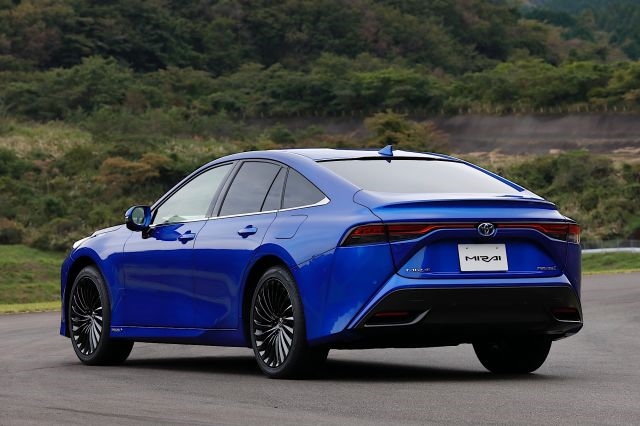
Mirai deputy chief engineer Ryotaro Shimizu said that the company was looking for a more “emotional design” for the new model. Gone are the quirky vertical air inlets on the nose (necessary for the fuel cell to breathe) in favor of a massive forward grille. The car is a couple of inches shorter and wider, and nearly six inches longer than its predecessor. Most of that space has been used for better legroom and comfort, and to make room for a fifth passenger. Depending on specification, it ships with either 19- or 20-inch wheels, making everything look a little more aggressive and sporty compared to the 17-inch wheels on its predecessor.
Inside, the biggest change beyond the fancier, Lexus-esque interior, is that the primary display is no longer housed in the central console. Driving the first Mirai (and the current Prius, for that matter) you needed to look too far down, off the road, to see the GPS display. Now the screen is mounted next to the instrument cluster, and it’s angled to favor the driver, which should make it much easier to use.
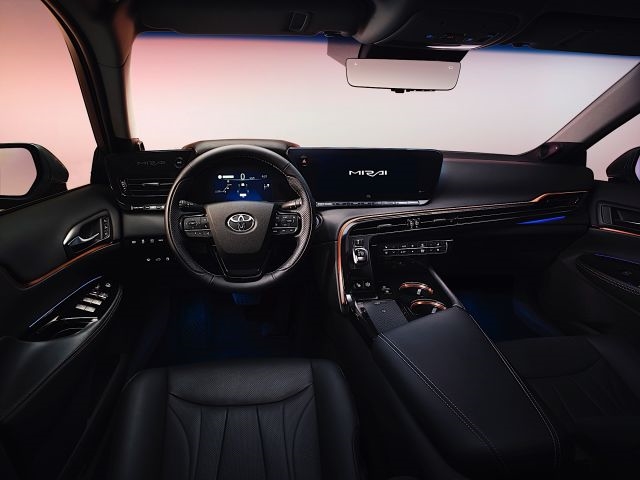
There was some free space between the driver and passenger at the leg level in the original Mirai, but in the updated model there’s now practically a dividing wall. It’s filled with bins and a mobile phone charging plate, but this was primarily changed to make room below for the longer, centrally-housed fuel tank. It should, at least, provide plenty of space for the doodads and ephemera that taxi drivers — a big customer for the Mirai — like to keep on hand while they’re driving around.
Toyota also wants to dispel the notion that the new Mirai will handle as, uh, gracefully as its predecessor. Driving fans often berate the Prius for its sluggish handling and feeling of disconnection from the road. The new Mirai has rear-wheel drive, with multi-link suspension, a sportier option compared to the front-wheel-drive first model. In addition, the centrally-mounted hydrogen tanks mean the car has a lower center of gravity, a more rigid body, and, Toyota says, close-to 50:50 weight distribution. Don’t expect it to handle like a race car, but maybe it’ll feel a little less like driving a cruise ship.
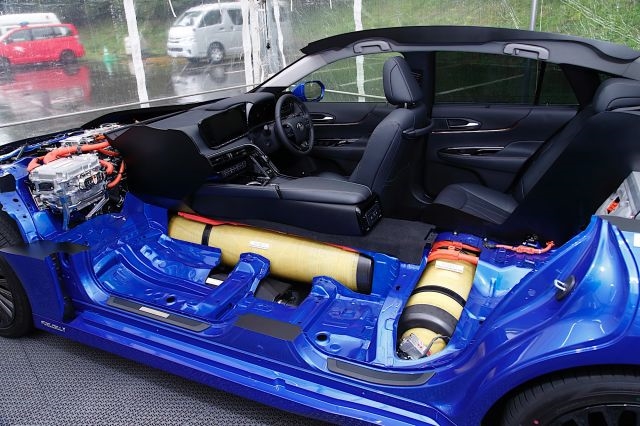
Shimizu added that when you hit the gas pedal, you should feel a “very good kick,” suggesting acceleration has also been improved. Toyota has also added something called an “Active Sound Creator,” a built-in fake engine noise to help the driver understand what’s going on with their car because the Mirai has been designed to be impossibly quiet on its own.
Making the Mirai roomier would have been difficult unless Toyota could shrink the car’s most cumbersome element; the fuel cell. The 114kW unit from the first car occupied 33 liters of space, dominating the engine bay. Toyota is boasting that the new model takes up nine liters less, at 24 liters, but is 10 percent more efficient, outputting 128kW despite the smaller size. As well as being smaller, it has fewer, uh, cells in its stack: 330, down from 370 before.
This allowed Toyota to install the bigger hydrogen tank, which runs along the floor of the car. It’s joined by two smaller tanks, one beneath the rear seats, and one under the trunk floor. The overall effect is that the fuel capacity has increased from 4.6kg to 5.6kg and, combined with the new fuel cell, contributes to a 30 percent range increase.
If you drive sensibly, the new Mirai’s quoted range is around 650km, or 403 miles — enough to cover the distance between Tokyo and Osaka. Of course, the current pandemic means that journalists can’t yet test out any of these claims in the real world. It may be some time before people can actually drive around in this vehicle.
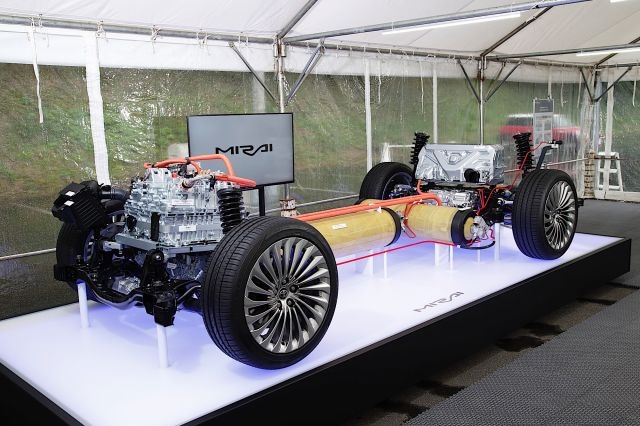
Toyota sometimes lets its marketing braggadocio get the better of it a few times and this habit is in full view here. The company describes the new Mirai as a “negative emissions” vehicle, because it filters the air as it passes through the fuel cell. The filtration process can remove up to 100 percent of the particulates, sulphur dioxide and nitrous oxide it comes into contact with. As far as Toyota is concerned, this car cleans the air it drives through, and the on-screen display will even tell you how many adults’ worth of breathing you’ve washed as you drive.
This is the same sort of skewed logic that the company uses to describe its petrol-electric hybrids as “self-charging.” On one hand, yes, these cars charge their own batteries, but that’s primarily achieved by burning carbon-emitting fossil fuels. Similarly here, a new Mirai car has burned up carbon in its construction, and until the majority of hydrogen is produced with renewables, it is not yet a carbon-neutral fuel, either. Electric and fuel cell cars are — overall — far cleaner than their petrol-powered counterparts, but these easily-debunkable semi-truths do fuel-cell vehicles (or any kind of cleaner car) no favors whatsoever.
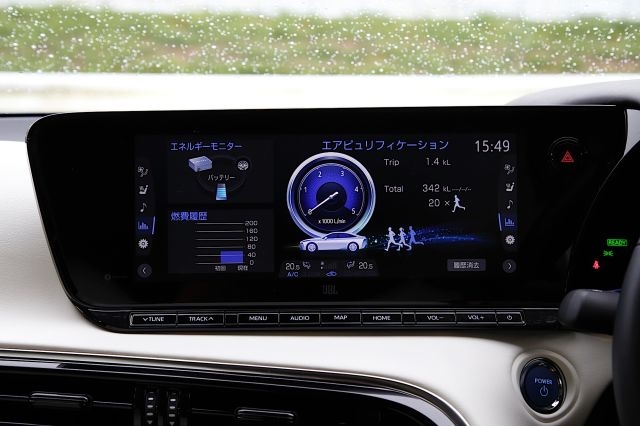
The new Mirai will retail for around 20 percent less than the first edition. The sticker price for the first model was around the $60,000 mark, so you can expect that to fall to around $50,000 now. But you’ll still need to live close enough to a hydrogen station to keep the thing running, and in the US, that’s limited to parts of California and one part of Hawaii. Private collectors who want one to sit in their garage are no good for the company’s mission of raising awareness and demand for hydrogen cars.
Aside from a few high-profile individuals and public bodies, the majority of the 11,000 first-generation Mirais were handed over to fleet operators and taxi companies. This is where hydrogen’s strengths lie: Just as clean as an EV, but with a refuelling time of around five minutes. A number of German taxi companies adopted several Mirais into their fleet specifically to ensure that their new cars wouldn’t be sat in recharging bays for several hours a day.
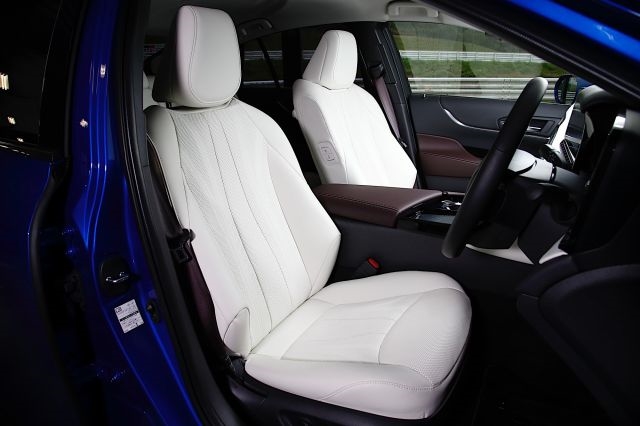
The first Mirai, and its fuel cells, were hand-built to order in the same small workshop where Lexus’ LFA (its short-lived supercar) was manufactured. Now, Toyota has developed the ability to mass produce both the car and its cells, with fuel cells now taking “seconds” to build, rather than around 15 minutes previously. As a consequence, the company is targeting a ten-times increase in worldwide sales. It wants the Mirai to be as transformational now as the second-generation Prius was through the first decade of this century.
But the infrastructure to support cars like Mirai has yet to turn up. In the US, there are just 45 hydrogen refuelling stations: 43 in California, and one in Connecticut and Hawaii, respectively. In Germany, there are 87 stations, while the UK has 13, and France has just four. Japan, meanwhile, has around 127 hydrogen stations, but its government has said it needs closer to 900 country-wide. But for most people, even thinking about buying a hydrogen car is an impossibility given the lack of infrastructure.
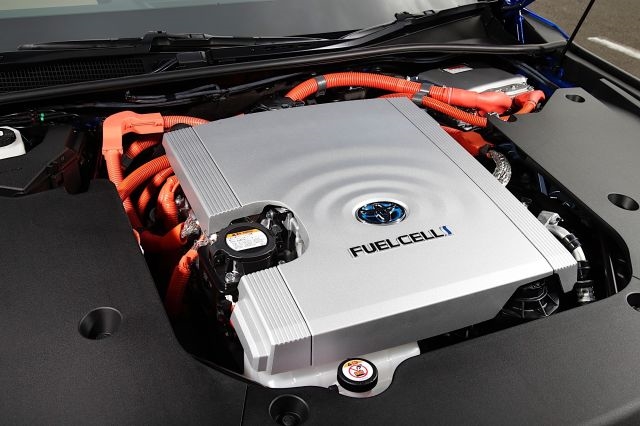
Japan may be Toyota’s home turf, but the country’s vocal support for hydrogen isn’t just about backing its homegrown champion. The nation has struggled for a while with energy independence and has historically needed to buy in oil from outside sources. In the wake of the Fukushima Daiichi disaster, the country’s energy self-sufficiency rate fell to single digits. The country’s Ministry of Economy, Trade and Industry has, for a while, pitched a scheme whereby it mass-imports hydrogen produced in Australia, reducing its dependence on Middle East oil. The 2020 Olympics was intended to act as a showcase for hydrogen, with a hydrogen Olympic Flame, hydrogen-powered olympic village and hydrogen fuel cell buses shuttling people to events.
Toyota’s grand plan to replace gasoline with hydrogen has also been usurped by the rise of EVs. The company has essentially ceded the small car market to electric car manufacturers, since you can’t yet make a fuel cell small enough to fit in a city car. And Toyota, despite all of its experience in the field, is still readying its first proper range of “pure” battery EVs. As for hydrogen, Toyota’s focus seems to be on the heavier, longer-range car market, as well as trucks and trains. It’s here, where battery weight and price are less problematic, that hydrogen becomes a viable energy source.
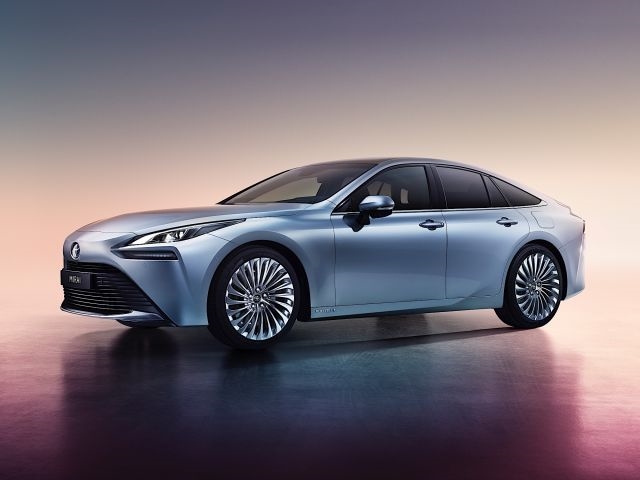
“Mirai” in Japanese translates to “future” and there is some hope that hydrogen’s day is, perhaps, coming. In the US, President Elect Joe Biden has pledged to use renewable energy to “produce carbon-free hydrogen at the same cost as that from shale gas” as part of his clean energy jobs plan. The UK recently committed to spending up to £500 million to generate up to 5GW of low-carbon hydrogen for “industry, transport, power and homes.” Japan, meanwhile, has been investing in hydrogen production for the last six years, and expects the cost to fall below the point where it no longer needs public subsidy.
But none of this is going to come in time to help Toyota sell the 100,000-or-so Mirais it plans to produce in the next few years. For that to happen, there needs to be massive growth in the number of hydrogen stations and facilities to produce it cleanly. Toyota isn’t giving up on hydrogen fuel cells, but it’s not clear when the world will be ready enough for FCEVs like the Mirai.
(28)

